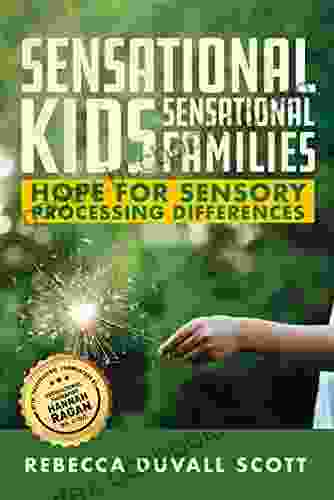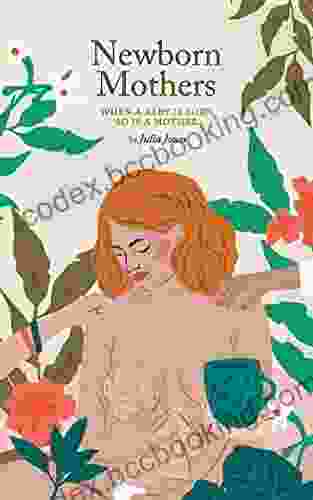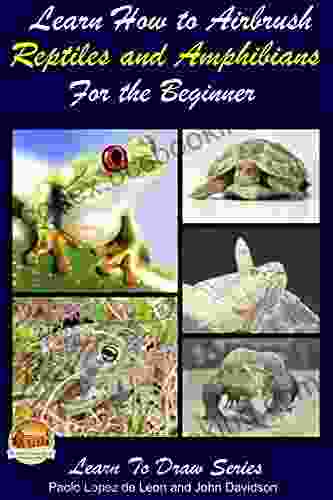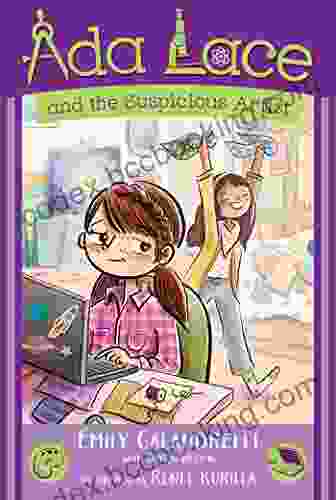Learn How To Airbrush Reptiles And Amphibians For The Beginners

Airbrushing is a great way to add detail and realism to your reptile and amphibian paintings. It's a versatile technique that can be used to create a wide variety of effects, from subtle shading to bold patterns. In this article, we'll teach you the basics of airbrushing reptiles and amphibians, including tips on choosing the right airbrush, paint, and compressor, as well as step-by-step instructions on how to paint a variety of reptiles and amphibians.
4.6 out of 5
| Language | : | English |
| File size | : | 9097 KB |
| Text-to-Speech | : | Enabled |
| Screen Reader | : | Supported |
| Enhanced typesetting | : | Enabled |
| Print length | : | 102 pages |
| Lending | : | Enabled |
Choosing the Right Airbrush
The first step to airbrushing reptiles and amphibians is to choose the right airbrush. There are two main types of airbrushes: single-action and double-action. Single-action airbrushes are easier to use, but they don't offer as much control as double-action airbrushes. Double-action airbrushes allow you to control both the flow of air and paint, which gives you more flexibility in your painting.
For beginners, we recommend using a single-action airbrush. Once you've mastered the basics, you can upgrade to a double-action airbrush if you want more control.
Choosing the Right Paint
There are many different types of paint that can be used for airbrushing reptiles and amphibians. The most popular type of paint is acrylic paint. Acrylic paint is water-based, so it's easy to clean up. It's also relatively inexpensive and dries quickly.
Other types of paint that can be used for airbrushing reptiles and amphibians include enamel paint and lacquer paint. Enamel paint is oil-based, so it's more durable than acrylic paint. However, it's also more difficult to clean up. Lacquer paint is also oil-based, but it dries faster than enamel paint.
Choosing the Right Compressor
An air compressor is used to provide the airflow for your airbrush. There are two main types of air compressors: piston compressors and diaphragm compressors. Piston compressors are more powerful, but they're also louder than diaphragm compressors. Diaphragm compressors are quieter, but they're not as powerful as piston compressors.
For beginners, we recommend using a diaphragm compressor. Once you've mastered the basics, you can upgrade to a piston compressor if you need more power.
Step-by-Step Instructions on How to Paint a Variety of Reptiles and Amphibians
Now that you have the right airbrush, paint, and compressor, you're ready to start painting! Here are step-by-step instructions on how to paint a variety of reptiles and amphibians:
Painting a Snake
1. Start by sketching out the snake's body on a piece of paper. 2. Load your airbrush with black paint and spray a thin line along the snake's body. 3. Switch to a lighter color of paint and spray a wider line along the snake's body, overlapping the black line. 4. Continue adding layers of paint, gradually lightening the color each time. 5. Once you're satisfied with the snake's body, you can add details such as eyes, scales, and patterns.
Painting a Lizard
1. Start by sketching out the lizard's body on a piece of paper. 2. Load your airbrush with green paint and spray a thin line along the lizard's body. 3. Switch to a lighter color of green paint and spray a wider line along the lizard's body, overlapping the dark green line. 4. Continue adding layers of paint, gradually lightening the color each time. 5. Once you're satisfied with the lizard's body, you can add details such as eyes, scales, and patterns.
Painting a Frog
1. Start by sketching out the frog's body on a piece of paper. 2. Load your airbrush with green paint and spray a thin line around the frog's body. 3. Switch to a lighter color of green paint and spray a wider line around the frog's body, overlapping the dark green line. 4. Continue adding layers of paint, gradually lightening the color each time. 5. Once you're satisfied with the frog's body, you can add details such as eyes, warts, and patterns.
Painting a Salamander
1. Start by sketching out the salamander's body on a piece of paper. 2. Load your airbrush with black paint and spray a thin line along the salamander's body. 3. Switch to a lighter color of paint and spray a wider line along the salamander's body, overlapping the black line. 4. Continue adding layers of paint, gradually lightening the color each time. 5. Once you're satisfied with the salamander's body, you can add details such as eyes, warts, and patterns.
Airbrushing is a great way to add detail and realism to your reptile and amphibian paintings. It's a versatile technique that can be used to create a wide variety of effects. With a little practice, you can master the art of airbrushing reptiles and amphibians and create beautiful, lifelike paintings.
If you're interested in learning more about airbrushing reptiles and amphibians, there are many resources available online. You can find tutorials, articles, and videos that will teach you everything you need to know to get started. With a little practice, you'll be able to create beautiful, lifelike paintings of your favorite reptiles and amphibians.
4.6 out of 5
| Language | : | English |
| File size | : | 9097 KB |
| Text-to-Speech | : | Enabled |
| Screen Reader | : | Supported |
| Enhanced typesetting | : | Enabled |
| Print length | : | 102 pages |
| Lending | : | Enabled |
Do you want to contribute by writing guest posts on this blog?
Please contact us and send us a resume of previous articles that you have written.
 Book
Book Novel
Novel Page
Page Chapter
Chapter Text
Text Story
Story Genre
Genre Reader
Reader Library
Library Paperback
Paperback E-book
E-book Magazine
Magazine Newspaper
Newspaper Paragraph
Paragraph Sentence
Sentence Bookmark
Bookmark Shelf
Shelf Glossary
Glossary Bibliography
Bibliography Foreword
Foreword Preface
Preface Synopsis
Synopsis Annotation
Annotation Footnote
Footnote Manuscript
Manuscript Scroll
Scroll Codex
Codex Tome
Tome Bestseller
Bestseller Classics
Classics Library card
Library card Narrative
Narrative Biography
Biography Autobiography
Autobiography Memoir
Memoir Reference
Reference Encyclopedia
Encyclopedia James Chapman
James Chapman Ellen Anderson
Ellen Anderson Janice Mcdonald
Janice Mcdonald Henri Piquer
Henri Piquer Laurence Anholt
Laurence Anholt John Shelton Reed
John Shelton Reed Emilie Raffa
Emilie Raffa Joseph Baladi
Joseph Baladi Emily Chenoweth
Emily Chenoweth Trevor Jones
Trevor Jones Emilie Bailey
Emilie Bailey Ilene Skeen
Ilene Skeen Jan Berenstain
Jan Berenstain Eloise Bourn
Eloise Bourn Matt Furie
Matt Furie Aristophanes
Aristophanes Ellen Tomaszewski
Ellen Tomaszewski Stef Smulders
Stef Smulders Manik Joshi
Manik Joshi Eric Blehm
Eric Blehm
Light bulbAdvertise smarter! Our strategic ad space ensures maximum exposure. Reserve your spot today!

 Enrique BlairUnlocking the Extraordinary in Every Family: Sensational Kids, Sensational...
Enrique BlairUnlocking the Extraordinary in Every Family: Sensational Kids, Sensational... Patrick RothfussFollow ·4.4k
Patrick RothfussFollow ·4.4k José MartíFollow ·14.7k
José MartíFollow ·14.7k Esteban CoxFollow ·9.4k
Esteban CoxFollow ·9.4k Henry JamesFollow ·16.5k
Henry JamesFollow ·16.5k Bryan GrayFollow ·17.4k
Bryan GrayFollow ·17.4k Eric NelsonFollow ·10.1k
Eric NelsonFollow ·10.1k Brennan BlairFollow ·14k
Brennan BlairFollow ·14k Colin RichardsonFollow ·18.7k
Colin RichardsonFollow ·18.7k

 Isaias Blair
Isaias BlairEscape to Sunrise Cottage: A Captivating Read You Won't...
Are you ready for a...

 Bradley Dixon
Bradley DixonWhen Baby Is Born, So Is Mother: A Comprehensive Guide to...
Giving birth is a...

 Mario Simmons
Mario SimmonsPhotographic Journal of Cruise Around South America: A...
Embark on an Extraordinary Expedition ...

 Langston Hughes
Langston HughesDream Achieved: Unlocking the Power Within to Make Your...
In the tapestry...
4.6 out of 5
| Language | : | English |
| File size | : | 9097 KB |
| Text-to-Speech | : | Enabled |
| Screen Reader | : | Supported |
| Enhanced typesetting | : | Enabled |
| Print length | : | 102 pages |
| Lending | : | Enabled |














